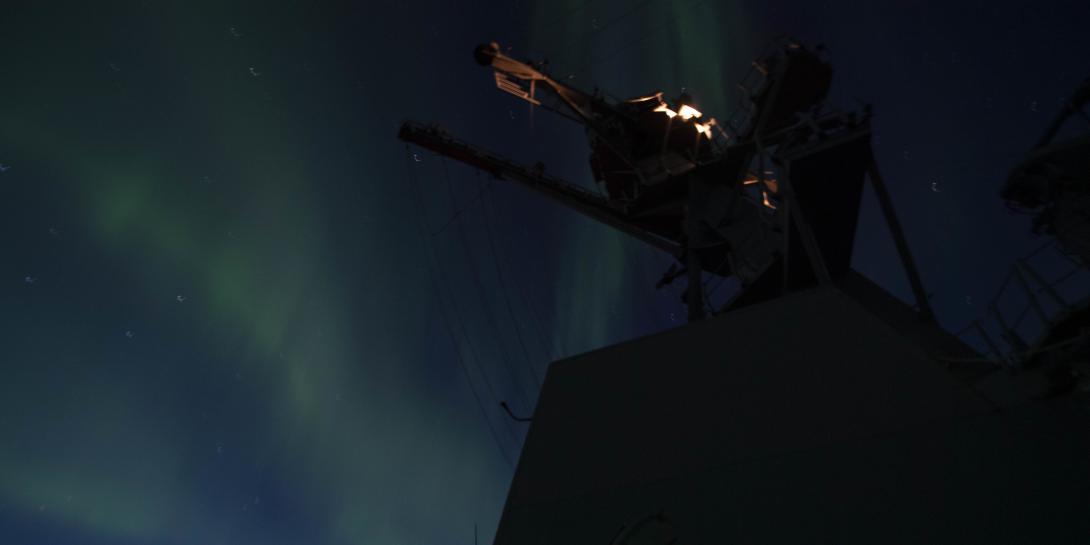Joint Force Takes On the New Ice Age
The U.S. Navy is adapting its Atlantic forces to improve interoperability with its NATO allies while incorporating navies from non-alliance countries. Traditional North Atlantic naval activities now extend into the Arctic Ocean, where changing conditions have opened up new threat windows.
According to Vice Adm. Andrew L. Lewis, USN, the environment continues to grow more challenging and complex, particularly in the North Atlantic. As the commander of both U.S. Second Fleet and NATO Joint Force Command Norfolk, Adm. Lewis understands that his domain no longer only encompasses from seabed to space but also the cyber realm, which is a major part of multidomain operations in the Atlantic region.
The Second Fleet and Joint Force Command Norfolk are a “unique animal,” the admiral says. Although the Second Fleet was disestablished in 2011, it was re-established in 2018. He adds that it is very lean compared to the earlier version, designed as expeditionary and tailored to today’s Russian threat. Its agility, which drives innovation, runs across the spectrum of operations from peacetime to conflict, Adm. Lewis emphasizes.
The biggest challenge facing his command is “filling the seam in the Atlantic,” which the admiral describes as physical. This task entails maintaining situational awareness as well as coordinating, interoperating, integrating and interchanging with other forces in the region. The seam should be viewed as a vulnerability, but it can be turned into an opportunity for the nations in the region by ensuring the cost or operational dilemma is significant for an adversary, he offers.
Adm. Lewis points out that Second Fleet forces are persistently present in the Arctic and throughout the Atlantic, which he describes as a battlespace that cannot be ignored. “The United States is an Arctic nation, and the region is integral to our national security,” he says. “We continue to manage that emerging domain with other Arctic nations in a way that is reciprocal, fair, peaceful and conflict-free.”
All but one of the Arctic nations are committed to a free, cooperative zone of operation, he states. “If we do not consistently operate in the Arctic with a measured and deliberate approach, the area is destined for conflict,” he declares. Economic opportunities could mean a peaceful, cooperative, flourishing environment.
The region is changing, with more navigable waters throughout the year, but it remains a harsh environment, the admiral says. “It’s very hostile logistically; it’s very hostile from a standpoint of hazards to maritime navigation, and it’s increasingly hostile by virtue of aggressive actors who are trying to control things outside of the rule of law and international norms.”
The fleet’s presence in the area has taken on a building-block approach, Adm. Lewis explains. Exercises with partners from among other Arctic nations may be small in scale but encompass nations with more operational experience in the environment than their U.S. Navy counterparts, he allows.
The increased emphasis on the Arctic reflects a renewed threat from the Russian navy. Adm. Lewis states the Russians are building up force constitutes where they see vulnerabilities in the United States and the broader alliance. Seams and perceived weaknesses are exploited in hybrid warfare, where they can freely operate in the information realm by wielding half-truths and lies.
Russia’s proficiency in cyber works well with its other traditional strengths. For example, in the undersea domain, Russia has continued its prominence in submarines and other capabilities.
The admiral adds that the Russians are very observant about Chinese, Iranian and North Korean as well as violent extremists’ activities and will take advantage of opportunities “if we allow them to,” he offers.
“We kind of fooled ourselves a few years ago at the end of the Cold War that the great power competition was dead or was no longer an issue,” he says. “But we’ve had an awakening … and that awakening continues.
“There is a real sense of urgency that we have to take on ourselves,” Adm. Lewis states. “It’s all of our responsibility; it’s nobody else’s.”
Read more about the military in the Arctic, Second Fleet and Joint Force Command and the interaction with adversaries in SIGNAL Magazine’s November issue online on November 1.





Comments